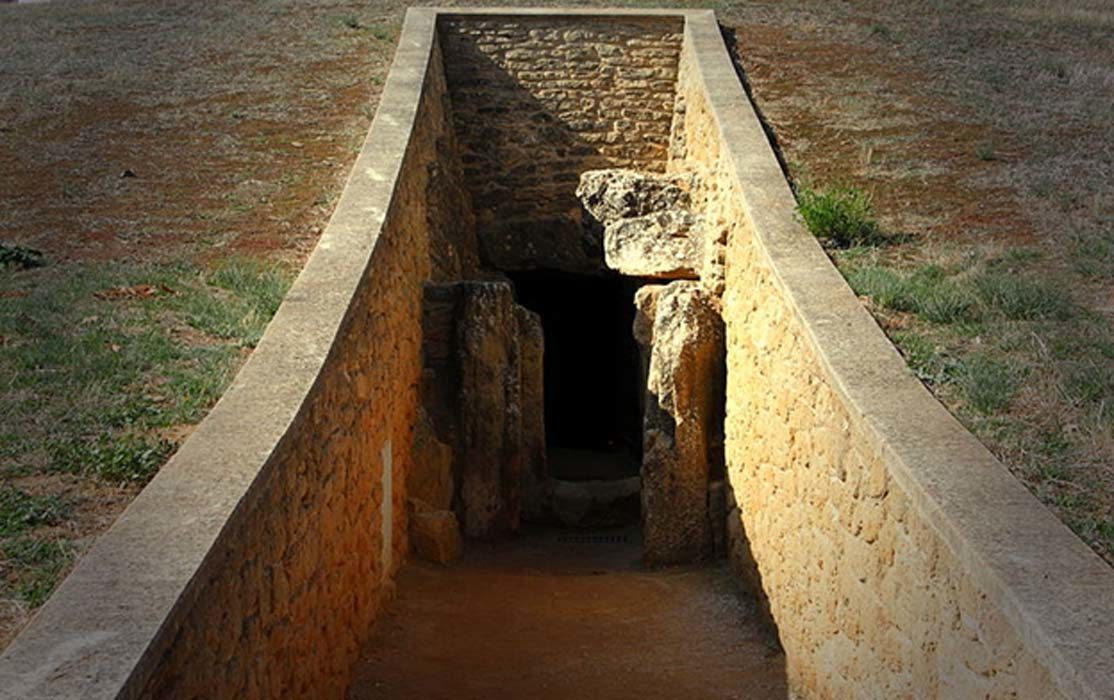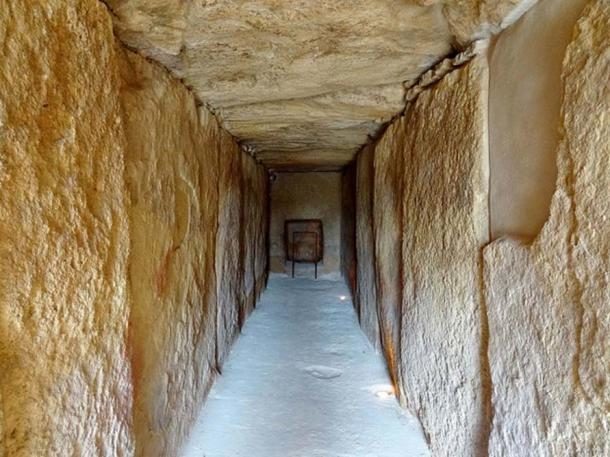The dolmens were officially discovered and recorded between 1903 and 1905 by the brothers Antonio and José Viera from Antequera, a province of Malaga. The distance between the Dolmen of Viera and Dolmen of Menga is only 70 meters (230 ft). Although the two tombs were made during different millennia, the monuments reveal a clear continuation of religious and ritual thought since prehistoric times.
Like most of the tombs dated back to the same period in Iberia, both dolmens are oriented 96° south east. This location is inspired by the summer solstice, but the surprising precision of the technology they used still confounds experts. Moreover, the dolmens from Malaga reveal the heritage of people whose story can only be told by the constructions they left behind.
The Dolmen of Viera
The Dolmen of Viera is located under a mound, also called a tumulus. It is 50 meters (160 ft) in diameter. The corridor leading to the burial chamber is quite long, measuring 21 meters (69 ft.). However, the burial chamber is rather small - just 200 cm (79 inches) high and 180 cm (71 inches wide). The tiny size of the tomb may be disappointing to the people who search for incredibly huge and rich tombs, like those of ancient Egypt.
The only way to discover more information about the builders of the dolmens at this time is by studying the burial goods, abandoned artifacts, and the measurements of the megalith.
An interesting characteristic noticed by researchers is related to the stones of the sides and the roof of the dolmen. The stones inside the construction had been prepared in a very careful and precise way. It is easy to notice that the workers spent more time on polishing them to make them fit well together.
Read the remainder of the article here.
Natalia Klimczak is an historian, journalist and writer. She acquired a Bachelor's and Master's Degree in History, and has spent the last 9 years working as a reporter, journalist and writer.





Reader Comments
to our Newsletter